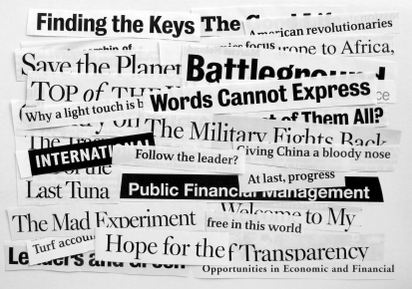8 Types of Headlines that Compel Your Readers to Action

Note: This post is mainly an exert from my ebook How to Generate Traffic for Your Website:
A headline has 5-7 seconds to get the attention of a reader. Not only that, but statistics show that only 2 out of 10 readers will read past your headline. That means if you’re going to hook your reader, you need to do it right away.
To give you a more concrete example of just how powerful a headline can be, John Wesley submitted an article to several social networking sites, including Digg, Reddit, StumbleUpon, etc. The headline read “The Two Types of Cognition”. With this headline the article generated about 100 visitors. Nothing spectacular. However a couple days later, and after some work rewriting his headline, John resubmitted it with a new headline. With the new headline it got about 5000 visitors. A very significant difference, 50 times more visitors. What was the difference? Only the headline. The article was exactly the same. The headline went from “The Two Types of Cognition” to “Learn to Understand Your Own Intelligence“. You can find the details of his case study here.
Headlines can and do have a significant impact. It might only be one line, but it can easily make or break your articles success.
In addition to grabbing the person’s attention, the headline must offer some value to the reader in exchange for them taking the time to read your content (article, press release, etc.). According to the legendary copywriter Robert Bly, there are eight categories of headlines that compel readers to take action and read your article. They are:
- Direct Headline: These are straight forward headlines that state exactly what they want, they make no attempt whatsoever to be clever. An example is “LandlordMax – 30% off today only”
- Indirect Headline: These headlines are subtle, what could be considered as link bait. They usually try to generate curiosity by the reader, or offer a double meaning in their headlines. In others words the classic link bait approach.
- News Headline: This is a direct news announcement. For example “LandlordMax releases version 6.05”.
- How to Headline: This is exactly as you would expect, it’s a headline that offers you an article on how to do something. For example how to fix a broken faucet.
- Question Headline: This category of headlines ask a question that the reader can relate to, that they can empathize with, something they would like answered. A classic example is “Who else wants to make a million dollars in the stock market?”
- Command Headline: This headline states what the reader of the article needs to do. For this headline to work the first word needs to be a strong and commanding word. For example “Buy this EBook now!”
- Reason Why Headline: This is basically a list of why something is good or bad. For example “3 ways to be more productive with your time”.
- Testimonial Headline: In this case the headline is a customer testimonial. This is done to offer outside proof, otherwise known as social validation. You’re validating through social proof that your article (or product) is great and worth the readers time. After all it’s not just you who says so, someone else is saying it too.
For further reading on headlines I recommend any book by Robert Bly. As well the book Advertising Headlines that Make You Rich contains a list of good and usable headlines (with a short explanation on how to use each headline). And don’t forget to check out Brian Clark’s blog CopyBlogger.com, he’s got a lot of amazing articles on how to write headlines. Good luck and good writing!






· May 19th, 2011 · 4:08 pm · Permalink
[…] or if at all, is made by just reading the subject title. Now I’m not talking about writing headlines that attract people to your emails like spammy emails do. I’m talking about writing subjects that will make sense […]
· July 24th, 2011 · 1:32 am · Permalink
Great advice. I’ve covered this topic on one of my blogs and did a small case study showing how much of an impact headlines really make on the success of a post/article/etc.
I’ve found that headlines that promise to make things easier, faster, cheaper, etc are the best and get people excited.
· November 18th, 2012 · 9:40 am · Permalink
[…] or never at all, is made by just reading the subject title. Now I’m not talking about writing headlines that attract people to your emails like spammy emails do. I’m talking about writing subjects that will make sense […]